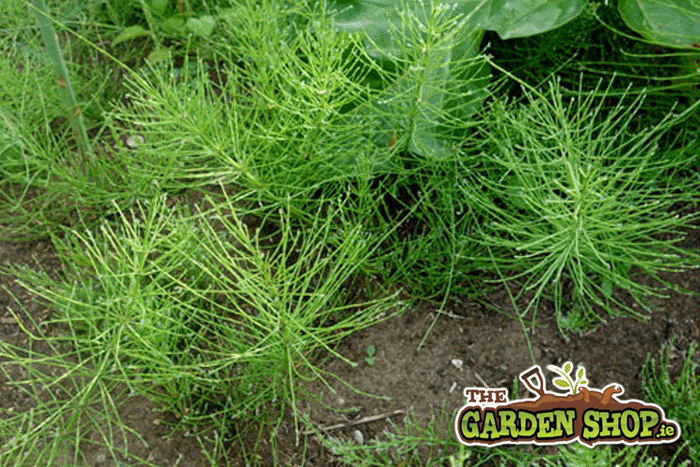How to Kill Mare's Tail

The common name of Mare’s Tail is used to describe three different plants the entire same genus, ‘Equisetum’. These plants are of course very similar & are distinguished by their preferred habitat.
- Equisetum Hyemale – Rough Mare’s Tail
- Equisetum Arvense – Field Mare’s Tail
- Equisetum Palustre – Marsh Mare’s Tail
Other common names for mare’s tail include Horse Tail, Candock, Snake-grass & Scouring Rush. To add to the confusion, an aquatic plant which looks similar to these Equisetums but is completely unrelated is also commonly referred to as ‘Mares Tail’. This aquatic plant, called Hippuris vulgaris is not an invasive weed.
The Mare’s Tail is the last remnants of the Equisetaceae family of plants. This family thrived during the Devonian period, hundreds of millions of years ago when huge Mare Tail trees soared 30m into the sky.
Now the only remaining members of the Equisetaceae family are a group of troublesome weeds that, because of their morphology have proven very difficult to control and are quiet invasive.
These primitives do have a vascular system and therefore systemic weed killers can be used to control them. The difficultly in controlling Mare's Tail lies in the fact that their foliage is resistant to herbicide uptake. Their bristle-like needles have a thick cuticle that prevents weed killer from penetrating through to their vascular system. This means that only certain herbicides are effective and that heavy coverage of weed killer is necessary to ensure effective control.
Kurtail is an effective option, but this is only available in the UK. The active ingredient is Glufosinate-ammonium and this can be found in Basta Herbicide. Neudorff also have a weed killer called Superfast & Longlasting Weedkiller that will kill Mare’s Tail. The active ingredient is Pelargonic Acid & Maleic Hydrazide. Again a good soaking of the plant is necessary for control.
An important point to note about Mare’s Tail is that they can reproduce by fragmentation. This means that the plants can spread & regrow from the smallest fragment of root or stem. With this, it is very important to manage the crop to avoid contaminating different areas of your garden.
Cultural control of Mare’s Tail, i.e. digging up it's root system is not an effective method of control and is in fact more likely to exacerbate the issue. By chopping & cutting up the plant’s root system, you will effectively increase the number of plants in your soil.
If you attempt to pull or weed out Mare’s Tail by hand, you will need to take great care in the disposal of the plant. Do not place on compost heap or dispose of in open soil. Ideally the plant should be gathered up and burned or gathered up and allowed rot on a non-porous surface.

